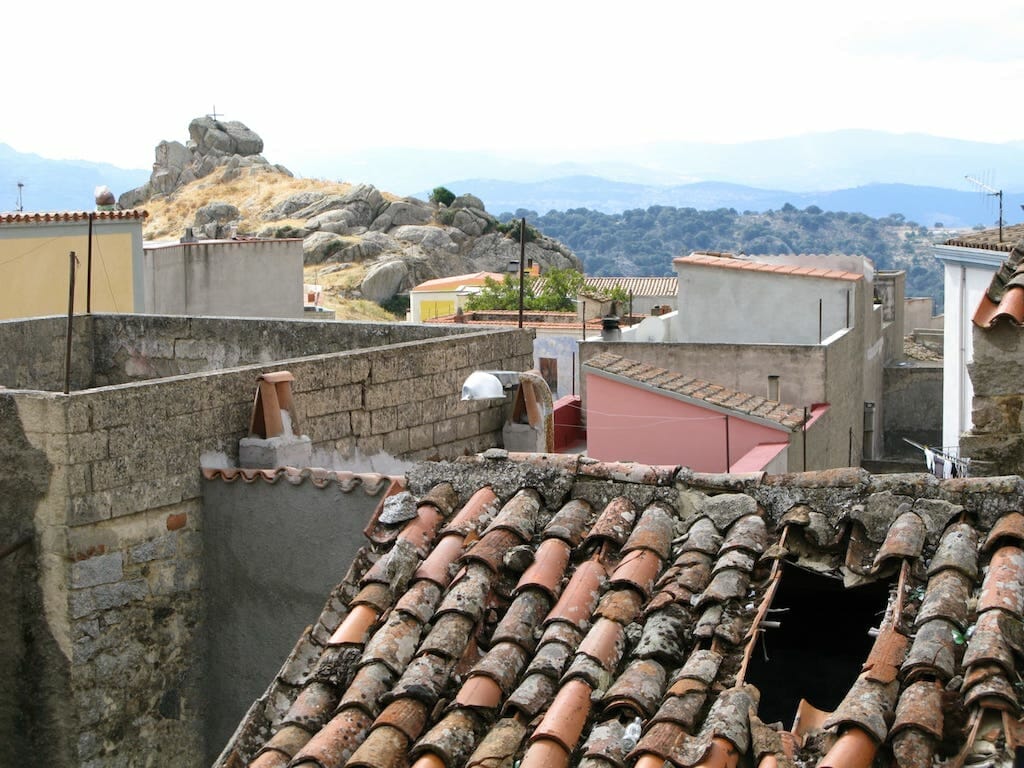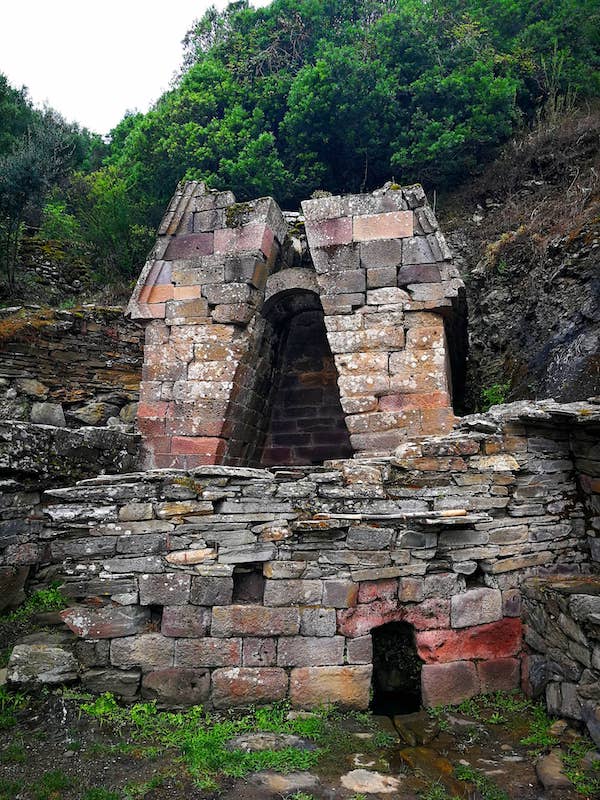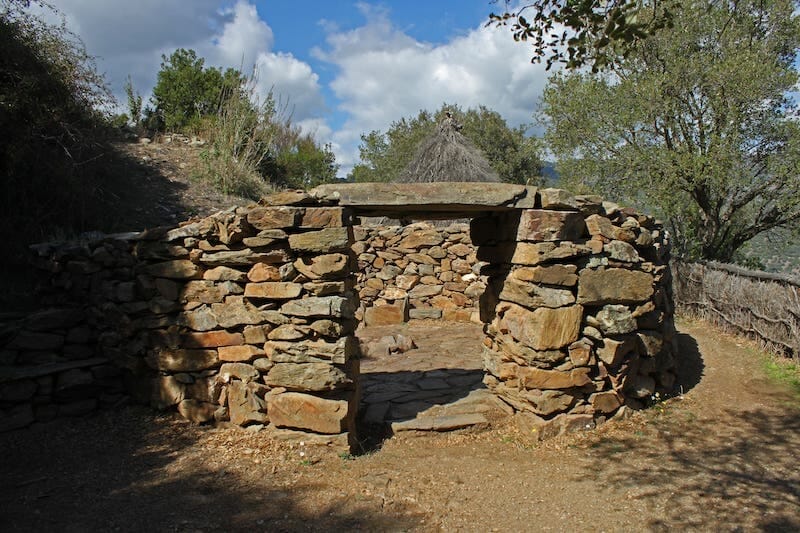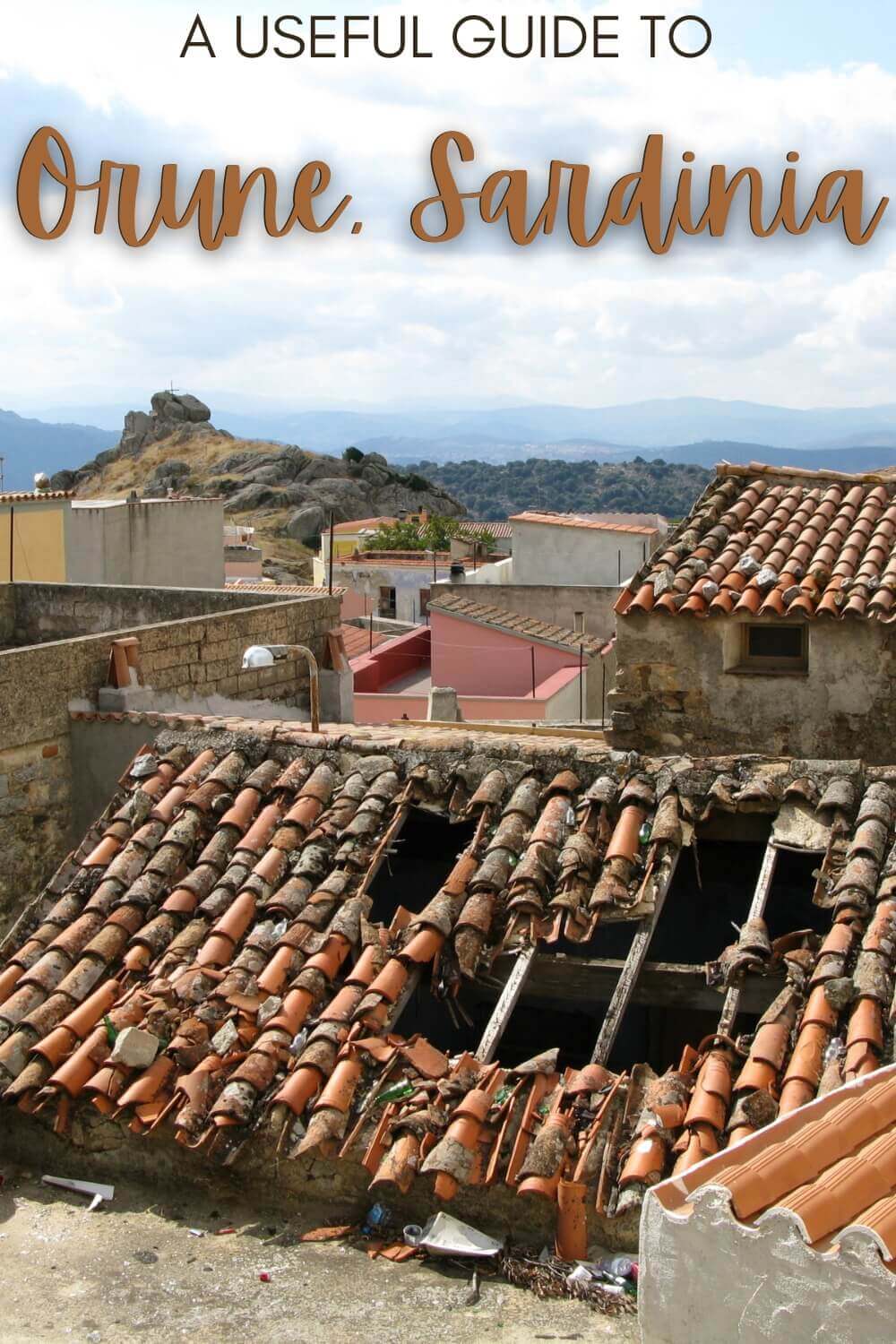The surroundings of Nuoro offer many surprises to tourists on a spree to discover Sardinia’s hidden gems, as well as for those looking for an alternative itinerary around the island, away from the beaches and the sea.
Orune is one of the most interesting and fascinating towns near Nuoro, beautifully perched at 800 meters (2,624.6 feet) above sea level, between the peaks of three mountains. This is a place I highly recommend visiting to anyone who wants to discover Sardinian traditions and the past related to the island’s Nuragic civilization.
If you want to know more about this fascinating small town, you will find many useful information on what to see right here on this guide.
Make sure to also read my post The Prettiest Small Towns In Sardinia and The Best Hidden Gems In Sardinia.

Table of Contents
Some Background Information About Orune
Orune is “natural balcony” from which you can admire the entire valley of the Rio Isalle. The breathtaking view extends from the Barbagia Mountains all the way to Gallura, where valleys and oak forests fill the landscape.
The town of Orune has a very ancient history. The area was inhabited in pre-Nuragic and Nuragic times, like most of the surroundings of Nuoro. In the Middle Ages, Orune became part of one of the Sovereign States (called “Judicates”) that existed in Sardinia, and like the rest of the island is also went also under Spanish rule.
Orune has the typical atmosphere of a small mountain town – peaceful and serene, where you can visit historic buildings, as well as evocative archaeological sites, and take in the incredible nature.

What To See In Orune, Sardinia
Su Tempiesu
A truly unique archaeological site, Su Tempiesu is an ancient sacred well that was used for the worship of water, built during the Bronze Age. The well was made with finely worked trachyte and basalt stones. The interior of the temple features a vestibule with a space dedicated to the offerings, while at the bottom there is a chamber built to collect the water from the spring.
This chamber features the typical structure of the Nuragic buildings. Rings, bracelets and figurines depicting human characters, such as warriors and commanders, were found in the well. In times of flood, water flows into an artificial channel, dug into the floor of the vestibule to allow the water to reach a second spring.
Other sits you may want to visit in the area are Lorana, another sacred well, and the temple of Su Lidone.
Don’t forget to also read my post The Most Impressive Archeological Sites In Sardinia.
Church of Santa Maria della Neve
The Church of Santa Maria della Neve, located right in the village of Orune, amazes with the beauty of the frescoes that adorn its three naves. The church was built in the mid-19th century, but in the early 20th century the interior was entirely painted in white, preventing visitors from seeing the frescoes.
These were fully restored only in 2011, after eight years of work. The quality of the restoration, combined with the original beauty of the frescoes, welcomes the visitors as soon as they enter the church. The harmony between architecture and art made the church earn the name “The Sistine Chapel of Barbagia.”

Village of Sant’Efis
The archaeological area of Sant’Efis is located in an oak forest in the Orune’s territory. It is a Roman settlement, built near an ancient nuragic village. The state of preservation of the Roman ruins is excellent, to the point where it’s possible to observe the floor slabs and also the network of water pipes. Its location within the forest makes it even more impressive to visit, so I recommend that you include it among your stops once you arrive in Orune.

Cantu a Tenore singing
Intangible Unesco Heritage since 2008, the Cantu a Tenore is a kind of singing that has several features that make it unique in the world. This form of art is thought to have ancient origins: the performing voices represent the sounds of animals and shepherds, which play an important role in Sardinian identity and culture. Tenor singing can be admire in many villages of the Barbagia region, including Orune of course. You will need to check locally for available dates – they usually perform during local festivals.
You should also read my post What Is The Canto A Tenore?
Sant’Antonio Abate celebrations
Festivals are a common thing to see in Sardinia, and Orune certainly lives up to the expectations with its own traditions and celebrations. Other than Sardinia’s famous Autunno in Barbagia, Orune is known for Sant’Antonio Abate, a particularly heartfelt festival that takes place every year on the 16 of January. Celebrations are typically held in Piazza di San Bernardo, the town’s main square, and see the lighting of a big fire. The date marks the beginning of the Carnival season.
Make sure to also read my post The Best Events And Festivals In Sardinia.
How To Get To Orune
To get to Orune you’ll have to get to Nuoro first – which is easy if you have a car. From Cagliari, take a combination of SS131 and SS131 bis and then SS389 from Nuoro until you reach the intersection of SP51 to Orune. From Olbia, follow SS131 bis southbound all the way to Nuoro and then take SS389 until you get to the intersection of SP51 to Orune.
If you wish to travel by bus from Nuoro, you can take bus 511 – you’ll be in Orune in around 40 minutes. There are five daily departures.
Pin It For Later!



Claudia Tavani
Claudia was born and raised in Sardinia, and after moving between the United States and the United Kingdom, she's now back living in her hometown, Cagliari. She's a travel blogger and certified travel designer who loves planning trips and publishing guides, travel tips, and packing lists so that you don't have to. Owner of Strictly Sardinia, cat mom to Minnie. Loves pizza, hiking, archeology, cities, beaches, swimming, and running. Hates peppers.